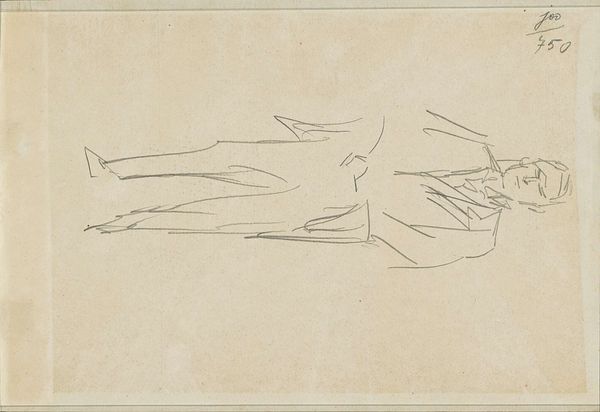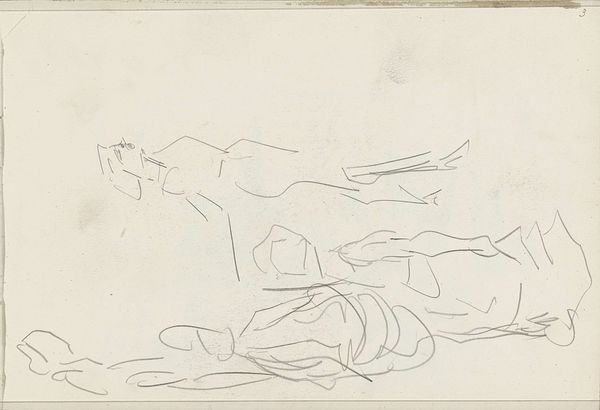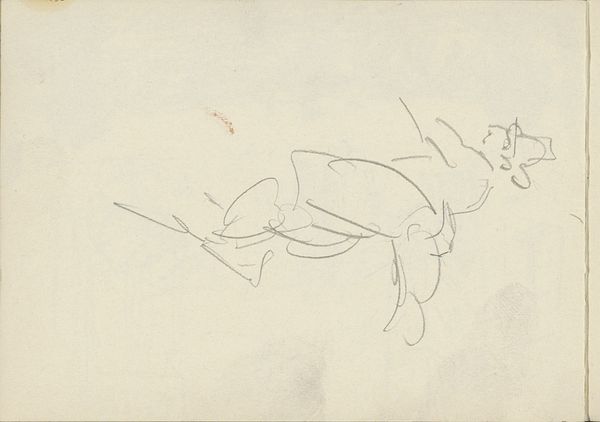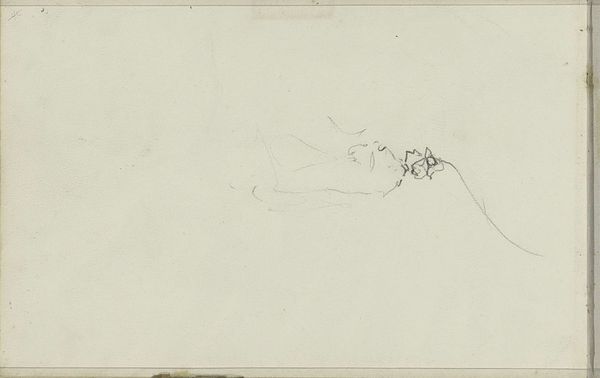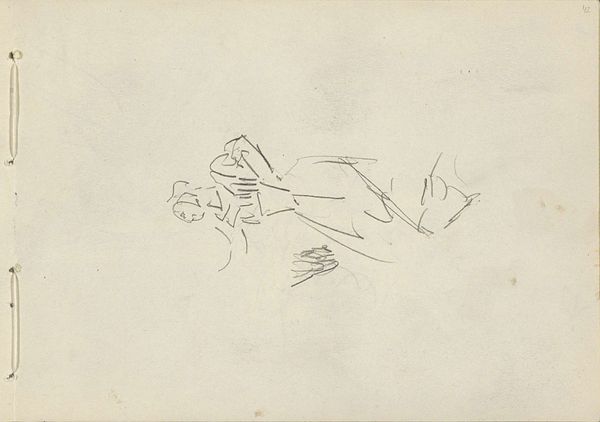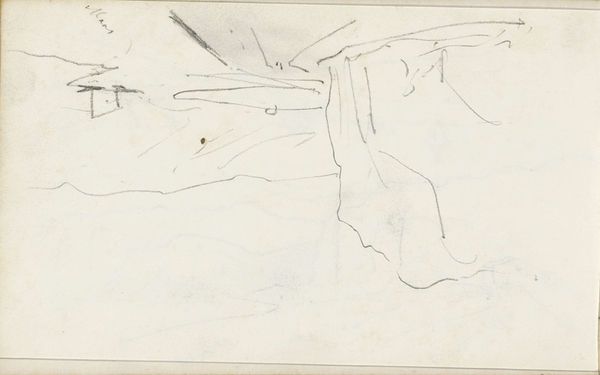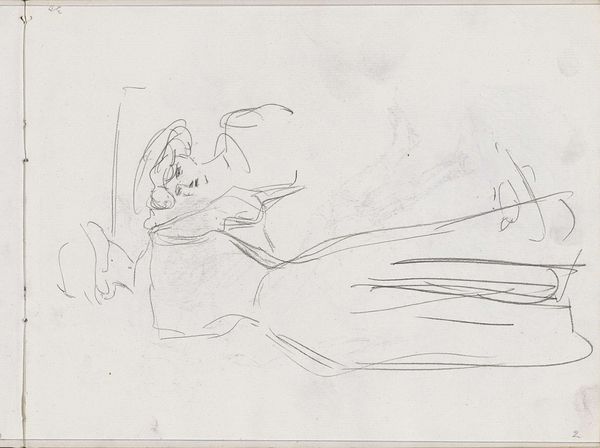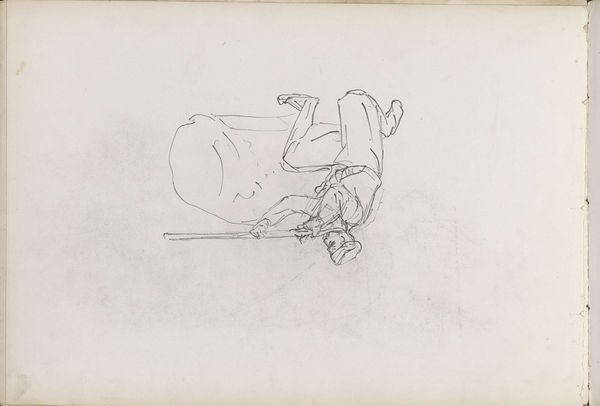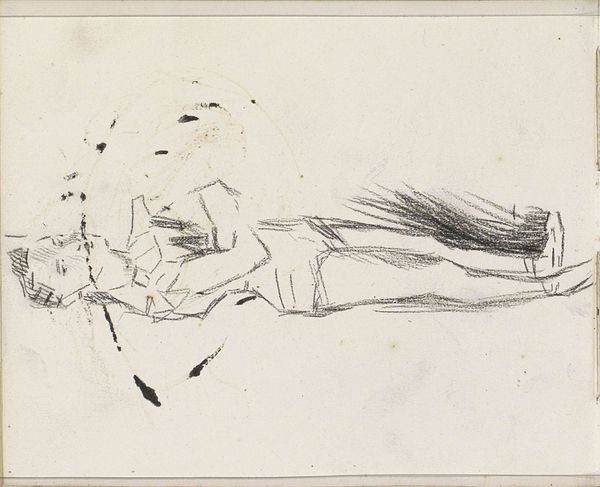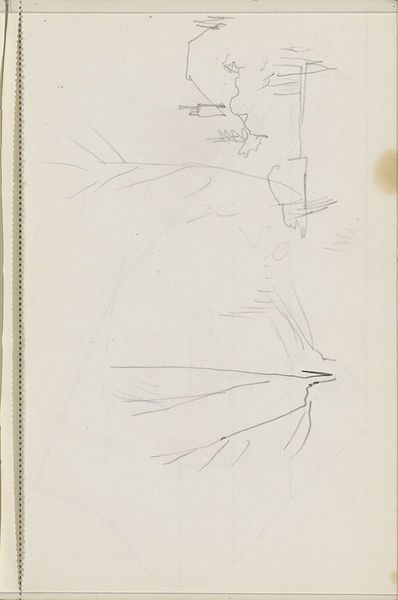
drawing, paper, pencil
#
portrait
#
drawing
#
figuration
#
paper
#
pencil
#
realism
Copyright: Rijks Museum: Open Domain
Curator: Here we have George Clausen’s pencil drawing, “Vrouw in klederdracht,” from 1874. Editor: Hmm, my first impression is fleeting, ephemeral—almost like a whisper of a memory. The lines are so delicate. Is she sleeping, perhaps? Or maybe just resting, caught in a moment of quiet contemplation? Curator: It certainly possesses that intimacy. Consider how Clausen positions this figure – perhaps a preliminary sketch for a larger composition. It is likely intended as an exploration of the sitter's traditional attire. There’s a burgeoning interest in documenting regional dress at the time. Editor: Oh, absolutely, you can see the care he takes with the folds of her clothing. But it also feels… sympathetic. Like he's trying to capture something deeper than just the fabric, maybe the very essence of womanhood in that place and time. And tell me, were these studies usually exhibited or just kept in the artist’s personal collection? Curator: Predominantly the latter. Drawings like this often served as studies for paintings. But it speaks to an increasing appreciation for the sketch as its own form. Note, the realist movement was influencing artists to observe subjects as they were—often unidealized or unvarnished. Editor: Realism, yes, but with a sensitivity. It makes me think about the unsung stories etched in those lines—the daily routines, the hopes, the quiet dignity that radiates from her barely-there pose. It's incomplete, perhaps, but still so evocative. It invites you to finish the picture in your mind. What’s beyond this glimpse of the woman, I wonder? Curator: Exactly! Clausen’s artistic explorations, with attention paid to detail in representing a sitter's form or garb, contributed towards an increasingly diversified art market, shaping our own tastes today. Editor: Ultimately, I think the beauty is how little he gives us, yet how much our imaginations provide. An unfinished symphony of pencil strokes. Curator: Indeed. It’s a compelling illustration of how the sketch offers immediacy and insight, even surpassing what’s explicitly portrayed. Editor: Thank you for your insight; it is now much easier to see the larger historical themes, along with a new level of subtle expression here.
Comments
No comments
Be the first to comment and join the conversation on the ultimate creative platform.

